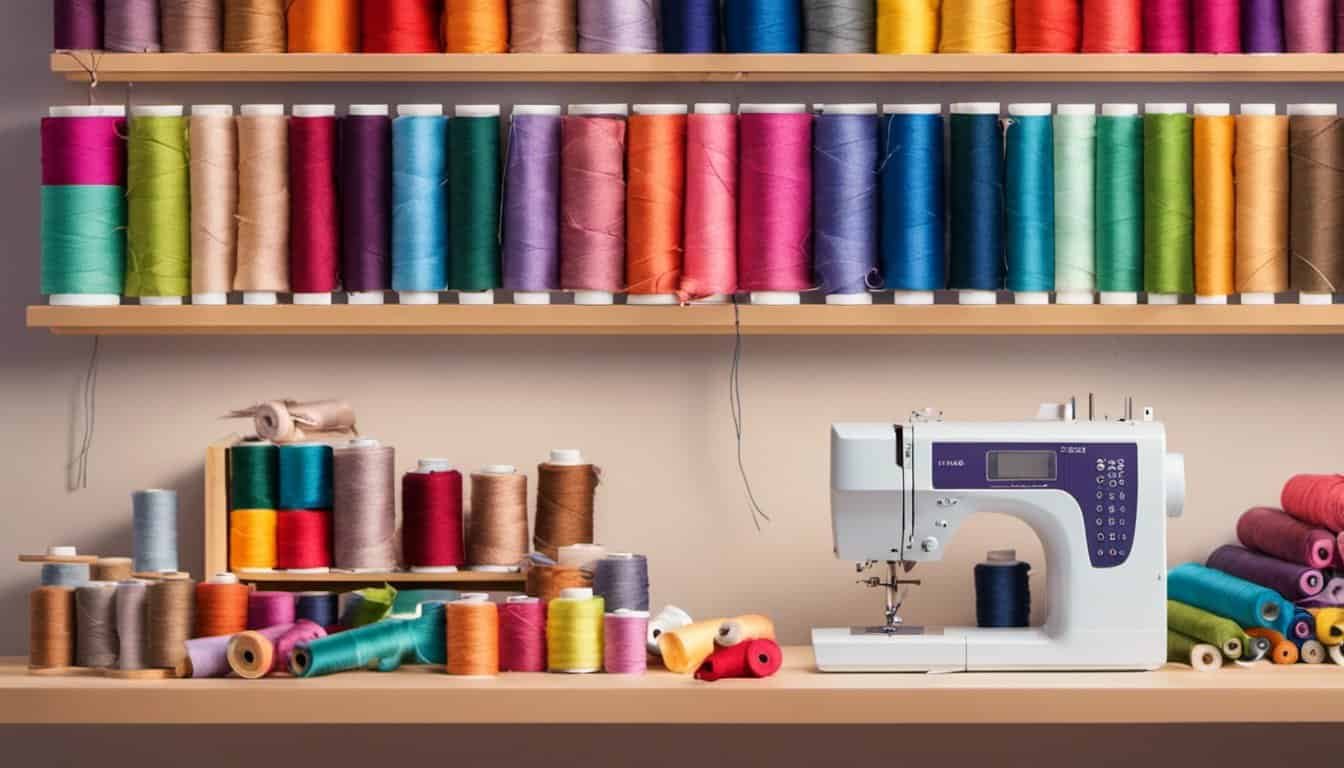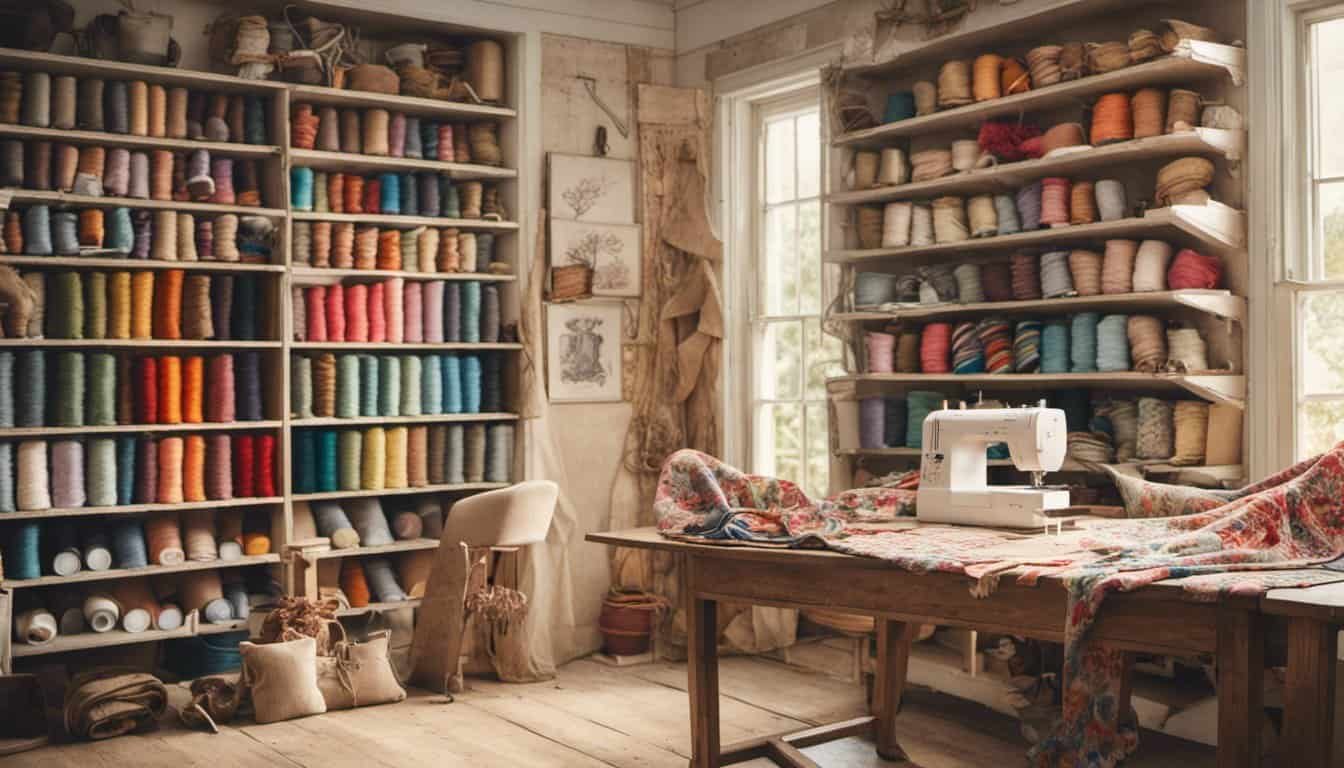Working with chiffon can feel like unlocking a world of elegance and grace in your sewing projects. If you’re new to this delicate fabric, don’t worry—it’s easier to handle than it seems. With its lightweight and flowing nature, chiffon adds a touch of sophistication to any creation.
Whether you’re crafting dreamy dresses, graceful scarves, or airy decorations, a few key tips can make all the difference. You’ll learn how to manage chiffon’s transparency, choose the right threads, and achieve those perfect drapes. Embrace the beauty of chiffon and let your creativity soar with these simple yet effective techniques.
Understanding Chiffon Fabric
Chiffon is a versatile fabric known for its lightweight and sheer qualities. Its delicate texture enhances the elegance of your sewing projects.
Properties of Chiffon
Chiffon exhibits several key properties that make it ideal for various crafts:
- Lightweight: Weighs approximately 2-3 ounces per square yard, ensuring comfortable wear.
- Sheer Transparency: Offers translucent layers, perfect for creating ethereal designs.
- Soft Draping: Flows smoothly, adding grace to dresses, scarves, and curtains.
- Durable Fiber: Typically made from polyester or silk, providing strength despite its delicate appearance.
- Elasticity: Maintains shape and resists wrinkles, enhancing the longevity of your creations.
Types of Chiffon
- Silk Chiffon: Offers a natural sheen and luxurious feel, ideal for high-end garments and evening wear.
- Polyester Chiffon: More affordable and easier to care for, suitable for casual dresses and accessories.
- Rayon Chiffon: Combines softness and durability, perfect for lightweight blouses and layering pieces.
- Printed Chiffon: Features patterns and colors, adding visual interest to scarves, skirts, and decorative items.
- Stretch Chiffon: Contains elastane, providing flexibility for form-fitting designs like evening gowns and bridal wear.
Essential Tools for Working with Chiffon
Working with chiffon requires specific tools to ensure your projects turn out beautifully. Here are the essential tools you’ll need:
- Sharp Fabric Scissors: Achieve clean, precise cuts to prevent fringes and maintain the fabric’s delicate edges.
- Fine-Tipped Needles: Use these for sewing chiffon by hand or with a machine to avoid snags and ensure smooth stitching.
- Lightweight Pins: Secure your fabric without leaving permanent marks. Consider using fine pins or clips designed for lightweight materials.
- Stabilizer or Tissue Paper: Support the chiffon during sewing to reduce shifting and maintain its shape.
- Serger or Overlock Machine: Finish seams neatly and prevent fraying by using a serger specifically adjusted for delicate fabrics.
- Ballpoint Thread: Choose a thread that slides between the fibers of the chiffon without piercing them, ensuring strong and invisible seams.
- Iron and Pressing Supplies: Gently press your chiffon with a low-heat setting and use a pressing cloth to avoid scorching the fabric.
- Rotary Cutter and Cutting Mat: Enhance precision when cutting multiple layers of chiffon, ensuring uniformity in your patterns.
- Pattern Weights: Replace pins when cutting or sewing chiffon to hold patterns in place without damaging the fabric.
- Fabric Markers: Select markers that wash out easily to transfer patterns and markings without leaving permanent stains on the chiffon.
Having these tools on hand will streamline your chiffon projects and help you achieve professional-looking results every time.
Techniques for Sewing Chiffon
Mastering specific techniques ensures your chiffon projects turn out beautifully. Follow these methods to handle chiffon with ease and achieve professional results.
Cutting Techniques
Accurate cutting minimizes fraying and ensures precise shaping. Lay chiffon flat on a stable surface, using sharp fabric scissors for clean edges. Stabilize layers with pattern weights to prevent shifting. Trace patterns with fabric markers, avoiding excessive pressure that may distort the fabric. Cut multiple layers carefully to maintain consistency across pieces.
Stitching Tips
Choose the right needle to prevent snagging; a fine, sharp needle works best. Use a straight or slight zigzag stitch to allow chiffon’s natural drape without puckering. Maintain a slow sewing speed to control the slippery fabric. Secure seams with clean finishes, such as French seams or invisible stitches. Press seams gently with a low-heat iron on the reverse side to avoid scorching the delicate fabric.
Design Ideas Using Chiffon
Explore various projects to make the most of chiffon’s elegance and versatility:
- Evening Dresses: Utilize chiffon’s lightweight fabric to create flowing gowns, layered skirts, and sleeveless designs that offer both comfort and grace.
- Blouses and Tops: Design elegant blouses with ruffled details, bishop sleeves, or sheer panels, leveraging chiffon’s soft drape for a sophisticated look.
- Scarves and Shawls: Craft colorful scarves, fringed shawls, or delicate neckties, taking advantage of chiffon’s airy feel and vibrant prints.
- Home Decor: Enhance your home with chiffon curtains, table runners, and decorative pillows, adding a touch of softness and elegance to any room.
- Accessories: Make stylish accessories like chiffon bags, headbands, and flower appliqués, incorporating the fabric’s lightness for effortless style.
- Wedding Essentials: Create romantic wedding attire and decorations, including bridal veils, bridesmaid dresses, and decorative garlands, using chiffon’s graceful texture.
- Layered Skirts and Overlays: Add dimension to skirts and dresses with chiffon layers or overlays, creating movement and visual interest in your designs.
Maintenance and Care
Proper maintenance ensures your chiffon garments and projects remain beautiful and durable. Follow these guidelines to care for your chiffon fabrics effectively.
Washing
- Hand Wash
Fill a basin with cold water and add a mild detergent. Gently agitate the chiffon without wringing or twisting. Rinse thoroughly to remove all soap residues.
- Machine Wash
Use a delicate cycle with cold water. Place chiffon items in a mesh laundry bag to prevent snagging. Select a gentle detergent suitable for delicate fabrics.
Drying
- Air Dry
Lay chiffon flat on a clean, dry towel or hang it using padded hangers. Avoid direct sunlight to prevent fading. Ensure the fabric dries completely to maintain its shape.

- Avoid Machine Drying
Machine drying can damage chiffon. Instead, use air drying methods to preserve the fabric’s integrity and prevent shrinking.
Ironing and Pressing
- Low Heat Setting
Set your iron to a low temperature labeled for delicate fabrics. High heat can scorch or melt chiffon fibers.
- Use a Pressing Cloth
Place a thin cloth between the iron and the chiffon to protect the fabric from direct heat and prevent shiny marks.
- Steam Ironing
Utilize the steam function to gently remove wrinkles. Hold the iron slightly above the fabric and allow the steam to penetrate without direct contact.
Storing
- Flat Storage
Store chiffon items flat to avoid stretching. Use acid-free tissue paper to maintain shape and prevent creasing.
- Hanging Storage
« Sewing Group Spotlight: 10 Inspiring Stories That Will Surprise You
10 Incredible Reasons to Start Making Scarves for Winter Coat Drives Today »
If hanging, use wide, padded hangers to support the fabric without causing indentations.
- Avoid Moisture and Pests
Keep stored chiffon in a cool, dry place. Use garment bags to protect from dust and insects.
Handling Stains
- Immediate Action
Blot stains with a clean cloth to remove excess material. Do not rub, as this can spread the stain.
- Spot Cleaning
Treat stains with a gentle detergent mixed with water. Apply the solution to the stained area and rinse carefully.
- Professional Cleaning
For stubborn or extensive stains, consult a professional cleaner experienced with delicate fabrics like chiffon.

Additional Tips
- Rotate Use
Avoid wearing the same chiffon garment repeatedly in short periods. Rotating use extends the fabric’s lifespan.
- Avoid Sharp Objects
Keep chiffon away from jewelry, zippers, and other sharp objects that can cause snags or tears.
- Regular Inspection
Check for loose threads or minor repairs. Addressing small issues promptly prevents bigger problems.
Following these maintenance and care practices will keep your chiffon creations looking elegant and lasting longer, allowing you to enjoy their delicate beauty for years to come.
Conclusion
Embracing chiffon opens up a world of elegant possibilities for your sewing projects. With the tips and techniques you’ve learned you can confidently create stunning garments and beautiful home decor. Remember to handle your fabric with care and choose the right tools to bring your vision to life. Let your creativity flow and enjoy the graceful charm that chiffon adds to your crafts. Happy sewing!


















